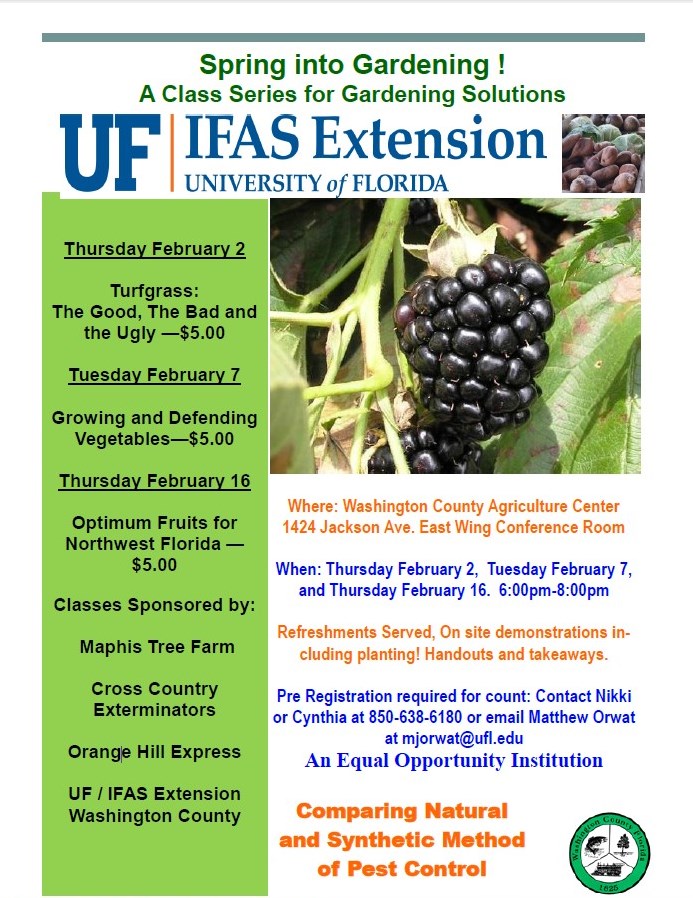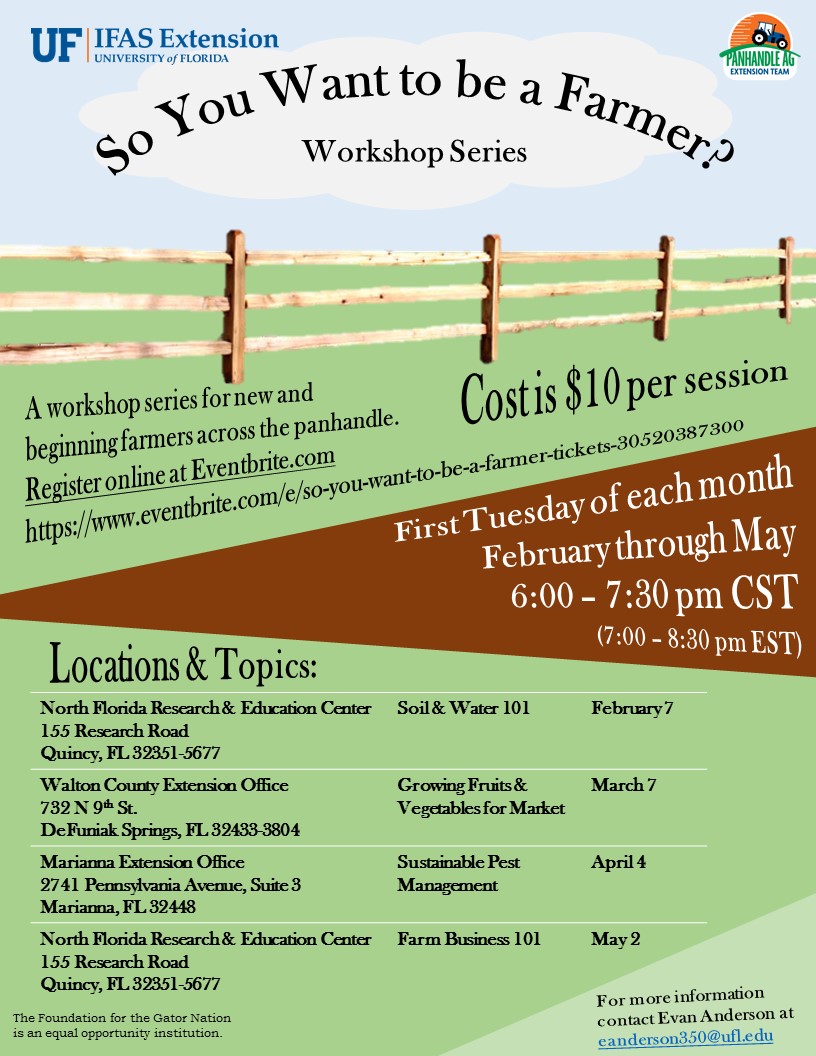
by Molly Jameson | Jan 26, 2017
Are you an avid gardener and looking to step it up a notch? Are your gardening eyes bigger than your dinner plate? If you have ever considered selling your bounty for market, you will certainly need to do your homework! One such step you can take is to attend the UF/IFAS Panhandle Extension Team’s So You Want to be a Farmer? Workshop Series.
There’s a lot to know if you want to get into this business! This series aims to introduce new or potential farmers to innovative and environmentally safe production practices, concepts of soil and water management, integrated pest management, how to grow for a farmers’ market, and farm financial management.
Agricultural professionals are actually in high demand. There is an estimated 60,000 highly skilled jobs in agriculture available annually, but only about half of these positions are being filled by graduates in agricultural fields. Additionally, Florida’s farmers are an aging group, and there was an 8% decrease in the number of farms and 26% decrease in acres of cropland from 2002 to 2012.
Fortunately, demand has greatly increased in recent years for locally produced specialty crops, meats, and dairy. There has also been an increase in the number of direct marketing opportunities and small farmers have been able to adopt new technologies, such as season extension techniques and local online marketing, to generate more revenue on small acreages.
The UF/IFAS Extension Panhandle Agriculture Team is hosting the So You Want to be a Farmer? Workshop Series to assist beginning or novice farmers as they navigate the many challenges of getting started.
If you are interested in attending, please register on the So You Want to be a Farmer? Eventbrite page. The cost is $10 per session, with sessions at multiple locations within the east Florida Panhandle.
Please see workshop dates and further details below:

by Larry Williams | Jan 26, 2017
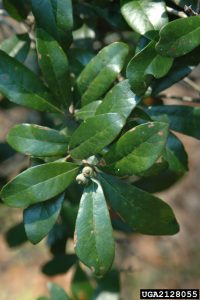
Live oak with immature acorns. Photo credit: Wendy VanDyke Evans, Bugwood.org.
Do you have more acorns than you know what to do with? When oaks produce loads of acorns, it sometimes is called a “mast” year. Do you remember the oak tree pollen and all those catkins that fell from oaks earlier in spring?
Catkins are the male flowers in oaks. Some people refer to them as tassels or worms. The airborne pollen from these catkins were part of the reproductive process in fertilizing the female oak flowers that ultimately resulted in all of these acorns. Oaks produce separate male and female flowers on the same tree. Female flowers in oaks are very small. You’d have to look very close to see them. Many oaks did well in their reproductive efforts this spring. Acorns are oak seeds. This entire process is part of the cycle of life.
There are theories about mast years, wildlife’s use of these acorns and what gardeners can expect next year as a result of this year’s abundant acorn crop. Timing of mast years is still a mystery. Numerous theories exist ranging from weather to geography to the life cycles of predators.
The most likely reason for high production seems to be weather-related. When oak trees have favorable weather at the time of oak flowering and good growing conditions, the mast seems to be increased.
But mast years happen irregularly, making it difficult to understand what causes a mast year. Heavy acorn production can occur twice in a row or it might be separated by several years or more. There’s no good way to predict it.
Mast years are important to wildlife, as acorns are an important food for many animal species. In low crop years, birthrate for some wildlife species, such as squirrels, will decline the following year. This also may involve increased competition for food and survival rates. The recent crop means that more young are likely to be produced by animals that forage for acorns.
Wildlife play a big role in forest regeneration. When acorns drop out of oaks, many animals help distribute these seeds. Squirrels can bury hundreds of acorns. Some of these acorns germinate and grow to become the next generation of oak trees. Some will be eaten by birds, bears, deer, rodents, including squirrels, and other wildlife. Rodents are in turn eaten by carnivores and deer browsing shapes which kinds of plants become established and survive. All those acorns have far-reaching impact on wildlife and our forests.
So, try to keep this in mind as you are fussing with all those acorns in your lawn and landscape this season.
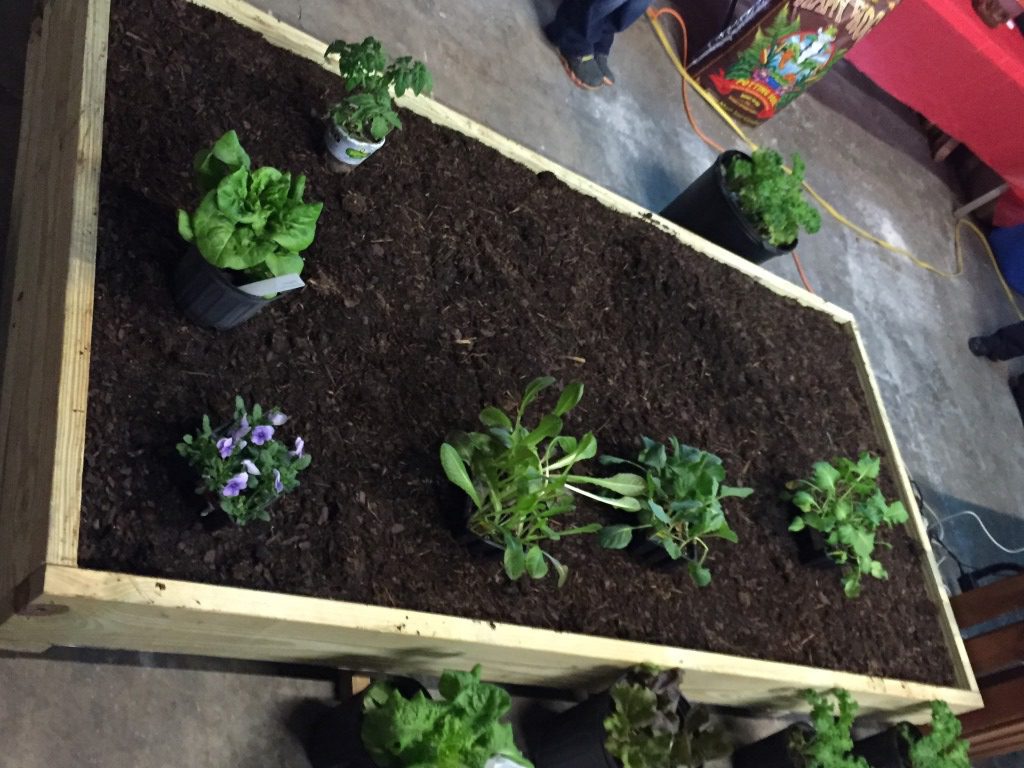
by Matthew Orwat | Jan 26, 2017
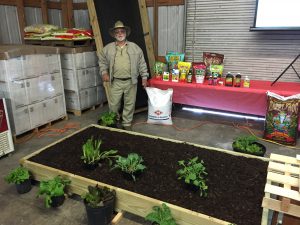 Now is the time to start planning for a spring garden! There are many different methods of successful gardening but here I’d like to discuss raised bed gardening.
Now is the time to start planning for a spring garden! There are many different methods of successful gardening but here I’d like to discuss raised bed gardening.
A few advantages of raised beds:
- Raised bed gardens provide an opportunity to bring the family together for some quality time. Add ways that you can enjoy the time with your spouse, child or grandchild. This gives you a chance to see the wonder on their faces as the plants sprout and flourish.
- Share the joy as you smell the flowers and pick the fruit.
- Provide a bouquet for the table as you add an item from the garden to your family meal.
A special kind of raised bed garden, known as an enabling garden, provides individuals needing assistance a way to garden with ease. Many have the impression that building such a garden is expensive, but it is not much more expensive or difficult than building a raised bed garden on the ground. First, begin by trimming and framing a raised bed garden just as you would for a ground level raised bed.

Materials
- 2 – (2X8) boards 14 foot long (treated or cedar)
- 2 – 2 ½ foot end pieces trimmed from a 2×8 board (treated or cedar)
- Central brace board trimmed to fit the inside of the bed
- 16 – 3 inch screws
- Table Saw
- Drill
- Extension Cord
- Durable base such as metal screening, lined with permeable weed barrier, attached to the frame securely.
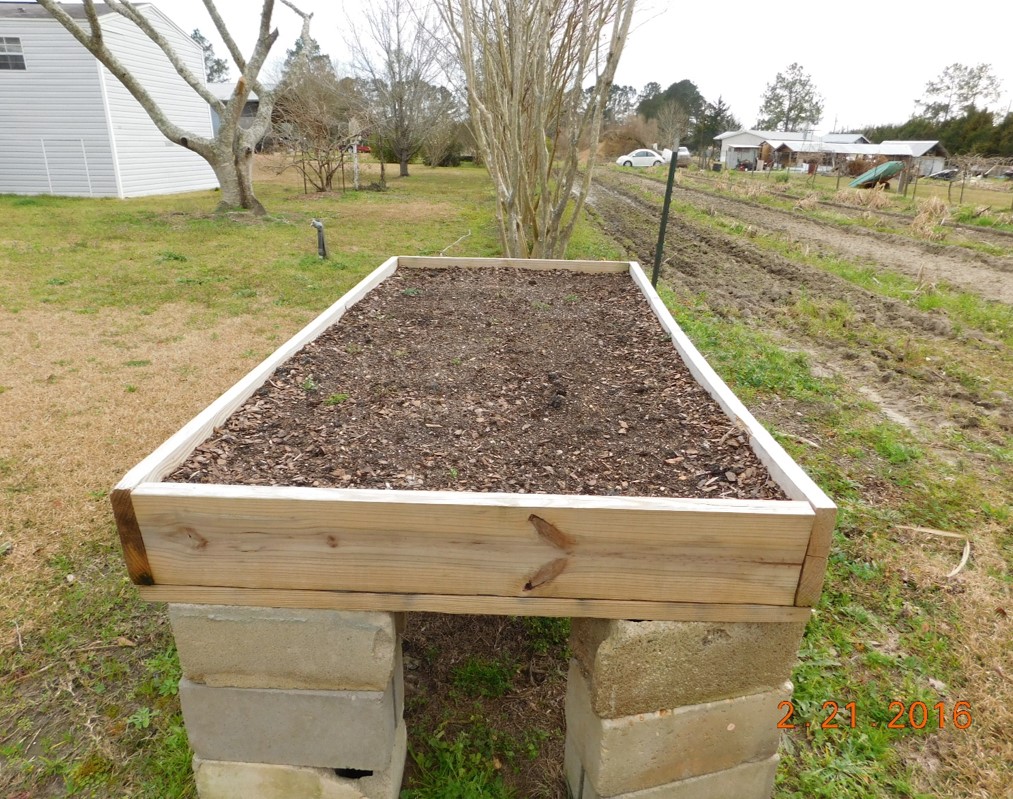
Once it is made, raise it to the desired level by placing it on cinder blocks. Add enough soil or compost to mound slightly higher than the lumber. Make sure the compost is well rotted, or use sterile potting soil. Don’t use soil from the garden since it may contain root diseases. Smooth out media evenly. Purchase a drip hose or line and run back and forth over the center area. Young plants will not have a large root so make sure the irrigation delivers adequate water to the entire bed.
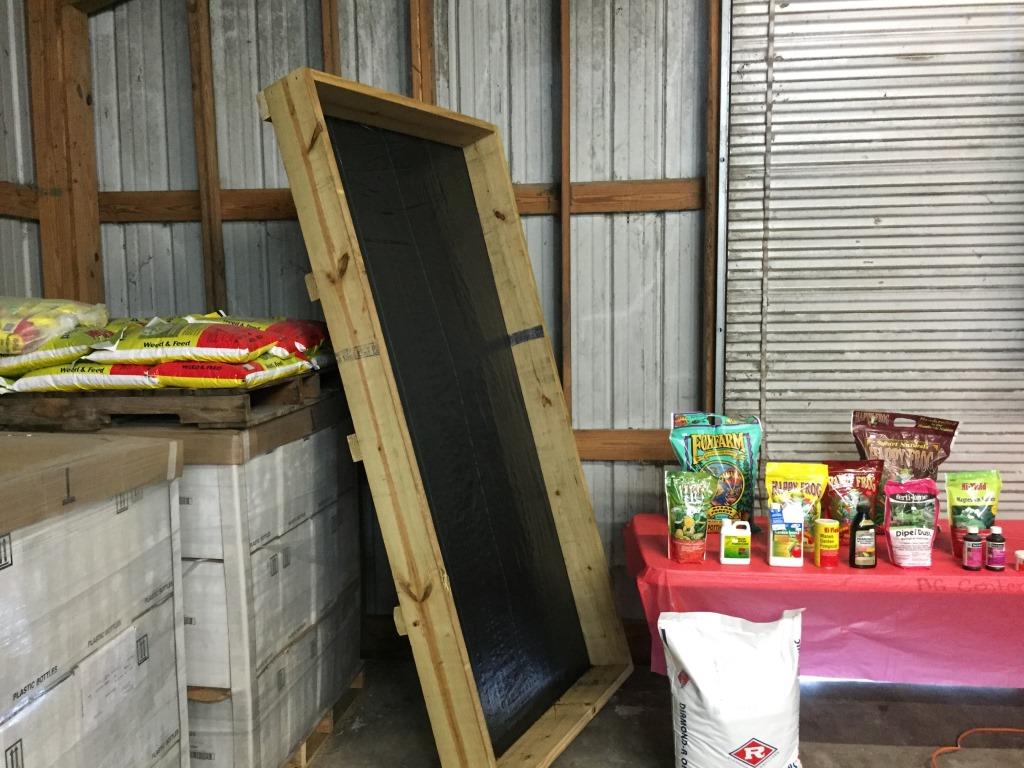
Many different vegetables herbs can be grown in raised beds but peppers, squash, eggplant, cherry tomatoes, basil, thyme, oregano and mint make excellent choices for a spring raised bed. Happy Gardening !

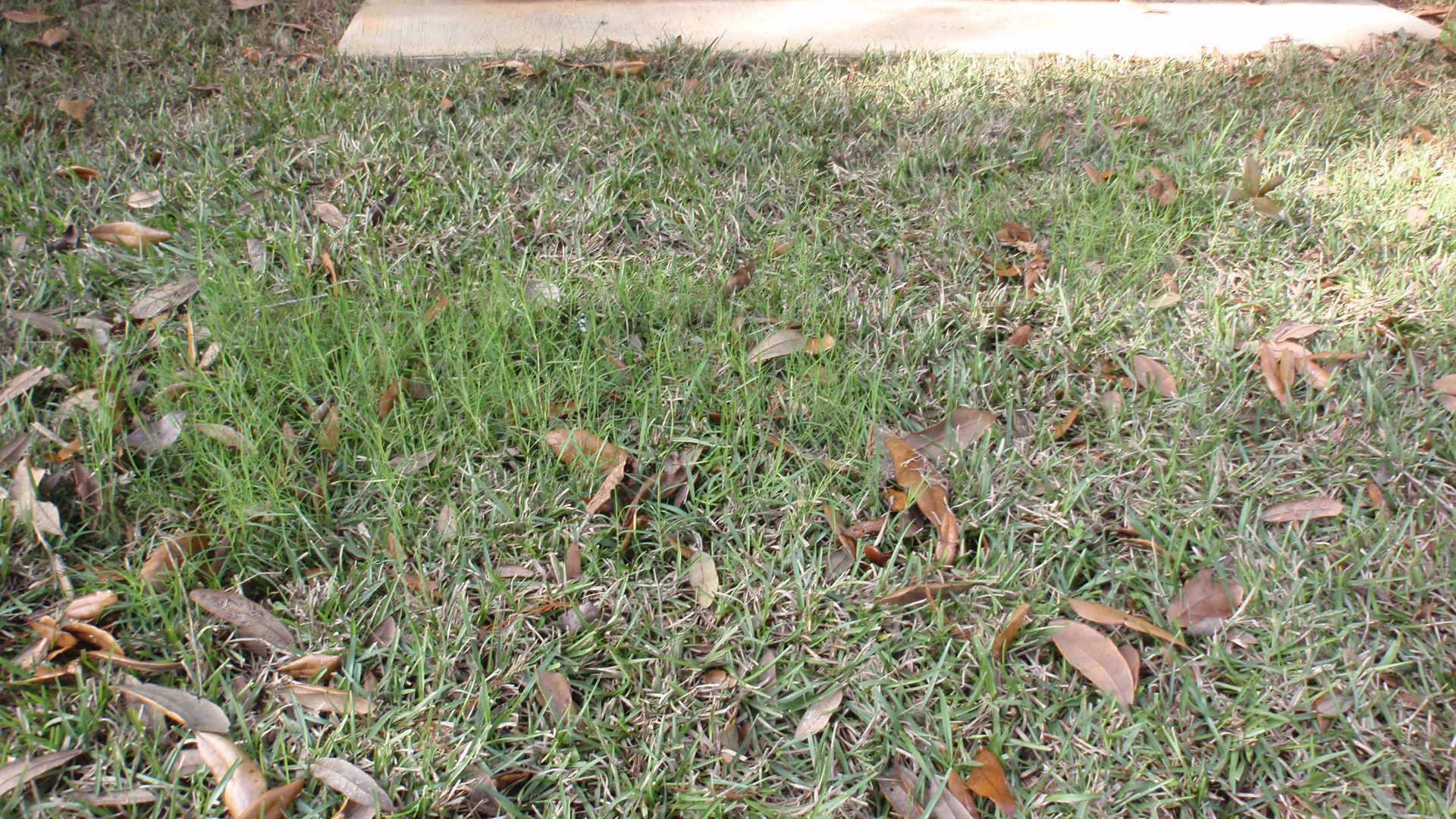
by Beth Bolles | Jan 17, 2017
It won’t be long before homeowners start thinking about sodding a new lawn or renovating areas of their existing turf. Although sodding when turf is dormant is acceptable, it is best to install sod that is green. One reason is that you can see if any sod pieces are infested with weeds such as bermudagrass . This perennial grass is very difficult to manage once it becomes established in centipede, St. Augustine, or zoysiagrass. Always remove turf pieces with bermudagrass during the installation process to prevent it from taking over a patch of your new lawn.
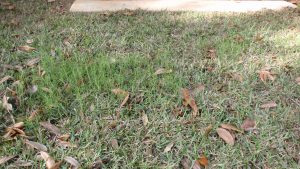
Bermudagrass growing in a piece of centipede sod. This piece should have been removed during installation to prevent the bermudagrass from taking over a patch of new centipede lawn. Photo by Beth Bolles, UFAS IFAS Escambia County Extension
If you have a piece of turf or a small area where common bermudagrass has emerged in your desirable grass, take care of the issue as soon as it is seen. The best option is dig out the infested area making sure that you get the underground runners of the bermudagrass. Smooth out the bare soil and then install new sod pieces. You may have to hand water these pieces as needed since the surrounding turf will already be established.








